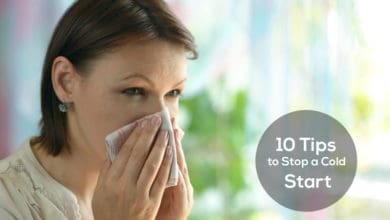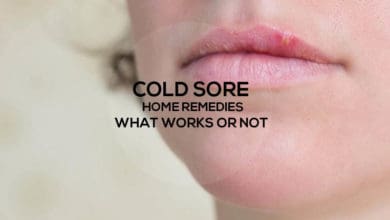Spring is finally announced, synonymous with forest walks and picnics. But for you, like millions of French, this period also heralds the return of a hay fever tenacious will last until autumn. For allergic rhinitis does not spoil you more life, follow the tips of WikiJunkie Health and Care
Runny nose symptoms usually appear in the early symptoms of a cold or sneezing together along with allergic rhinitis, acute rhinitis. The following therapy to introduce both simple and effective, it is worth this kind of problem people have to try!
Therapy for Runny Nose (allergic rhinitis)
Table of Contents
- Firmly with both hands palms rub against each other.
- Feeling heat after the palm, index finger Press and hold the nose root and then five fingers together, cover the nose bag.
- Two to three times the static slow breathing. Repeat the purposes of seven – eight, the perfume will naturally stop.
- In addition, the hole is located in the spinal column of the body (shoulder bone connected to the line) on the occasion of the right side of the ridge about a centimeter or so, as there is a red bean size like durum. Through massage at this place, you can achieve the effect of perfume stopper.
- When the implementation of the above two methods does not work, try drinking onion soup to warm the body, in order to achieve the goal of stopping perfume. Modulation method as follows – First, a thin cut onions into the bowl, then add a tablespoon of miso and brown sugar, boiled them carefully, and finally into the hot water, after thoroughly stirred hot to drink.
Allergic Rhinitis
Rhinitis could be allergic together with non-allergic in nature. There are better ways accessible to deal with allergic rhinitis. It is caused by hypersensitivity to allergens. It is also known as sensitive nose. It is the most common type of this nasal disorder.
Nasal congestion is normal for the initial 2-4 weeks after Rhinoplasty Surgery. It is one of the most common symptoms prompting doctor appointments. Doctors don’t advice utilizing this medication for extended periods because it can result to drug-induced nasal congestion.
Nasal sprays offer immediate relief. In short, they are basically meant to be used only for a short time period, to get temporary relief. In most cases, they do not cure the root cause, that is, the disease or infection. Antihistamine nasal sprays are utilized to inspect the irritation brought on by environmental irritants.
The nose is a rather considerable area of the human body and is accountable for the feeling of smell. Runny nose is definitely an exact annoying condition. When you’re troubled by a runny nose for over four weeks, you must go to a doctor for appropriate diagnosis of the issue.
Usually, nose will take great care by itself. It might be brought on by anything that irritates the nose. Thus the nose becomes blocked. As stated earlier, a runny nose is quite a minor wellness problem that doesn’t need medical therapy.
Allergic rhinitis: how to prevent it? How to treat?
The most truly effective approach to control or avoid rhinitis is to get rid of the cause. Management There are several methods about how to take care of non-allergic rhinitis. It is divided into different types as per the underlying cause.
Allergies include nasty symptoms that will cause you to wipe and gripe. They affect most people in the world today. Individuals that are prone to seasonal allergies might be already acquainted with this condition.
Itchy nose and itchy, sneezing, constant feeling of having their ears blocked, waking up puffy eyes that weep at the slightest walk in the fields … Spring is not a cakewalk, and if symptoms of rhinitis allergic are not serious, they are difficult to endure every day. Painful to spend his time this nose at a dinner with friends, to have sore eyes and swollen during a professional meeting or sneeze every 5 minutes during class or during an exam!! !
Diagnose the causes of rhinitis
The hay fever you suffer for years is not a fatality, do not hesitate to talk to your doctor. He first seek to eliminate other causes of rhinitis and nasal discharge by performing a detailed review of your throat and nose, and also look for signs of allergy may be located in other areas of your body (eczema, asthma…). A thorough examination will help assess your background: Have you had other signs of allergy, your parents or your grandparents-they are allergic, etc.
Finally, it can be driven to offer you testing by an allergist through an allergic balance to find what exactly the substances that trigger your symptoms.
How to treat allergic rhinitis?
PREVENTIVE TREATMENT OF SEASONAL RHINITIS
In the case of seasonal allergic rhinitis, a preventive treatment with antihistamines may be prescribed: often such treatment will completely avoid the onset of symptoms, and in all cases it will decrease significantly. This should be started from the beginning of the period usually occurs your hay fever.
PREVENTIVE TREATMENT OF PERI-ANNUAL RHINITIS
For rhinitis per annual, it is imperative to support the environment: avoid carpeting, treat all textile items with Miticides in rooms and use slipcovers treated if allergic to dust mites. Avoid animals and at least deny them entry to the rooms. Depending on the nature of the allergenic substance, take steps to reduce its contact and inhalation. Using a pollen filter in the car can also reduce exposure to the allergen.
DRUG TREATMENTS
Whatever type of allergic rhinitis, symptomatic medication uses cures antihistamines or spraying nasal corticosteroids associated or not. The desensitization – now mainly prescribed sublingual – is the only treatment that works permanently on the cause of the allergy, to favorably alter the course of disease.
Of course, the first thing is to avoid as much as possible contact with the substance responsible for your allergic rhinitis … Not always easy!
Identify signs
The symptoms of allergic rhinitis is well-known to those who suffer this disease. A nose that starts to flow continuously, with a clear flow like water (known as watery rhinorrhea) and which requires to fulfill its tissue pockets. Often there are also signs at eye level: tearing, stinging, itching, and sensation of the irritated and swollen eyelids.
A sensation of plugged ears is also often associated, related to thickening of the wall of the tubes Eustachian (Attached Diagram) , these small channels that go from the throat to the middle ear and that role is to balance the pressure between the inside and outside of the eardrum.
The repetition of these irritations eventually have an effect on the walls of the nose, they render more fragile and more susceptible to infections.
30% of the adult population affected
Often overlooked by patients who do not consider themselves genuinely ill, allergic rhinitis is a reaction of the walls of the nose to the presence of an external substance that can trigger an allergic reaction. This material (so called an allergen) causes a response from certain immune cells that automatically generate a too large amount of antibody (immunoglobulin type E or IgE) at the nasal mucosa, that is to say the inner liner nose. This production is also accompanied by a dilation of blood vessels and local irritants show. As this reaction takes place locally throughout the ENT area, the nose but also all bodies connected to it that will be affected: the rear throat, middle ear and eyes.
30% of the population annually presents allergic rhinitis, reflecting in people, allergic predisposition or sensitization to specific allergens.
Pollen, dust and animals: primary culprits
In many cases, are the pollens that trigger these crises, then it is of seasonal allergic rhinitis, or “hay fever?” Indeed, pollens are mainly present in the regions between February and September. All pollens are not allergenic: to have this characteristic, they must indeed contain proteins that will be recognized by the allergic person and trigger a reaction … and the presence of this type of protein can vary greatly from one region to another, including pollens of the same species of trees !!
On the other hand, allergenic pollens are only those that are scattered by the wind and can be inhaled by allergic people: those who are spread by insects are not sources of hay fever attacks. Among the plants giving the most allergenic pollen include grasses (grass prairie), Mugwort, ragweed and nettle, cypress, birch, oak and plane trees.
When the allergenic product is permanently present in the environment, symptoms are present throughout the year, and it is called perennial allergic rhinitis. This is mainly due to “domestic” elements hairs of pets, feathers; house dust (including the famous dust mites), cockroaches, etc.
Written by: Dr. Laurent Aroma









